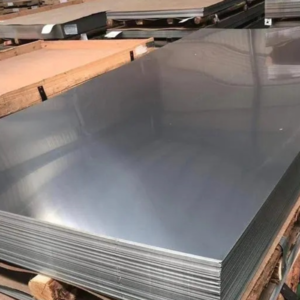Get in touch with us
Leave a message
Maraging steel redefines what’s possible in ultra high strength steel performance. Unlike conventional alloys, our precisely formulated grades deliver exceptional strength without sacrificing toughness. The unique maraging steel composition, featuring nickel, cobalt, and molybdenum, creates materials that excel in aerospace, tooling, and defense applications. As a specialized maraging steel manufacturer, we maintain strict control over every batch, ensuring consistent properties across all maraging steel grades for your most demanding engineering challenges.

Maraging Steel emerged in the 1950s, pioneered by metallurgists at Inco (International Nickel Company) seeking a tough, high-strength material for aerospace. Combining “martensite” and “aging,” Maraging Steel’s development hinged on a unique heat-treatment process that hardens a low-carbon martensitic structure through precipitation aging. Early grades like 18Ni Maraging Steel (250, 300) became staples in Cold War-era missile casings and aircraft components. Over time, refinements led to variants like C350 Maraging Steel, expanding its reach into tooling and sports equipment by the late 20th century.
Maraging Steel adheres to standards like AMS 6512 (for 250 grade), AMS 6514 (300 grade), and MIL-S-46850, defining its grades—typically 200, 250, 300, and 350—based on yield strength in ksi (e.g., Maraging Steel 300 offers ~300 ksi). Classifications focus on nickel content (e.g., 18Ni) and alloying elements, with C-series (C250, C300, C350) denoting cobalt-enhanced variants. These specs ensure Maraging Steel meets stringent aerospace and defense requirements.
Maraging Steel is an iron-based alloy with low carbon (0.03% max), enriched with nickel (17-19%), cobalt (7-12% in C-grades), molybdenum (3-5%), titanium (0.2-1.8%), and traces of aluminum (0.1-0.15%). For instance, Maraging Steel 300 balances 18.5% Ni, 9% Co, and 4.8% Mo, while C350 Maraging Steel boosts titanium for added strength. This composition drives its ultra-high strength through aging precipitates.
| Type | Composition | Properties | Common Variants |
|---|---|---|---|
| Maraging Steel 250 | Ni 18%, Co 7.5%, Mo 4.8% | High toughness, good ductility | 18Ni (250), C250 |
| Maraging Steel 300 | Ni 18.5%, Co 9%, Mo 4.8% | Ultra-high strength, weldable | 18Ni (300), C300 |
| C350 Maraging Steel | Ni 18%, Co 12%, Mo 4.8% | Exceptional strength, hardness | 18Ni (350), C350 |
Maraging Steel’s chemical behavior varies by environment. Here’s a table summarizing its traits:
| Property | Description | Key Elements | Performance |
|---|---|---|---|
| Corrosion Resistance | Moderate, prone to rust in wet conditions | Ni, Mo | Fair, needs coatings |
| Oxidation Resistance | Stable up to 500°C | Ni, Co | Good, not high-temp |
| Magnetism | Magnetic due to iron base | Fe | Strong |
| Heat Resistance | Loses strength above 550°C | Ti, Mo | Moderate, not for extreme |
Maraging Steel lags behind stainless steel in corrosion resistance but excels in strength-focused settings.
Maraging Steel’s physical prowess sets it apart. Here’s a comparison table:
| Property | Maraging Steel | Stainless Steel (304) | Titanium (Ti-6Al-4V) |
|---|---|---|---|
| Yield Strength | 1700-2400 MPa | 215 MPa | 880 MPa |
| Hardness | 50-60 HRC | 70-90 HRB | 36 HRC |
| Ductility | 6-12% elongation | 40% | 10% |
| Density | 8.0 g/cm³ | 8.0 g/cm³ | 4.43 g/cm³ |
Maraging Steel outshines stainless in strength and hardness but trades off ductility, unlike titanium’s lightweight edge.
Maraging Steel shines in:
Its ultra-high strength suits precision and durability demands.
Maraging Steel has drawbacks:
These factors restrict its use where cost or corrosion is a priority.
Maraging Steel exhibits moderate corrosion resistance in the annealed condition but becomes more susceptible to corrosion after aging treatment. The following factors influence its corrosion behavior:
Welding Maraging Steel requires care:
These methods ensure Maraging Steel performs at its peak.



A: Unlike conventional high-strength steels that rely on carbon for hardening, Maraging Steel contains very low carbon content and achieves its strength through an aging process that forms intermetallic compounds. This results in superior toughness, better weldability, and minimal distortion during heat treatment.
A: While possible, machining Maraging Steel after aging is challenging due to its high hardness (48-58 HRC). It’s recommended to perform most machining operations in the annealed condition and only minor finishing operations after aging.
A: Yes, Maraging Steel is ferromagnetic in both annealed and aged conditions, making it suitable for applications requiring magnetic properties.
A: Maraging Steel is significantly more expensive than conventional alloy steels due to its high nickel and cobalt content. However, many manufacturers and distributors in China have begun producing more cost-effective versions while maintaining quality standards.
A: Common surface treatments include chrome plating, nickel plating, nitriding, and specialized PVD coatings. The optimal treatment depends on the specific application and operating environment.
A: Maraging Steel maintains good toughness at cryogenic temperatures, making it suitable for low-temperature applications. The 250 grade typically offers the best combination of strength and low-temperature toughness.

Professional manufacturer of premium specialty alloys, offering stainless steel, Hastelloy, nickel-based alloys and processing services. Delivering superior metallurgical solutions for aerospace, petrochemical, marine engineering and other demanding industries.
©2025 alloy-materials.com COPYRIGHT ALL RIGHT RESERVED.